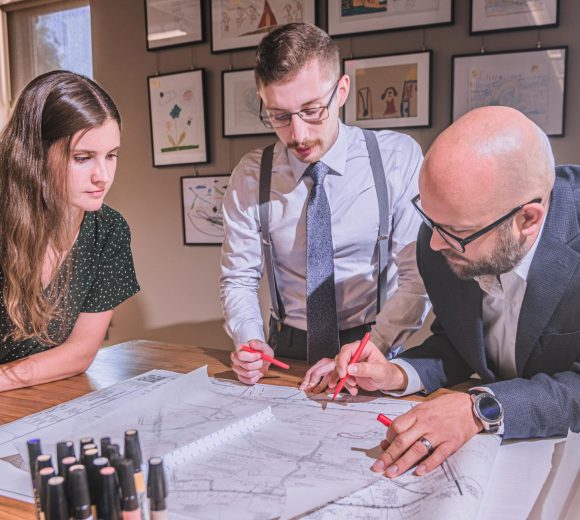Navigating the Regulatory World of Stormwater Management
Describing the land development entitlement process in Pennsylvania as “complicated” would be an understatement. Navigating multiple reviews and approvals across Municipal, County, Conservation District, Department of Transportation (DOT), and Department of Environmental Protection (DEP) can be overwhelming and extremely complex. One of the more significant obstacles within the approval process is the design of DEP-mandated post construction stormwater management systems. Significant portions of a project’s design budget are being allocated for the design, permitting, and approval of stormwater management systems. Savvy developers have learned that stormwater design and approval can be the linchpin to keeping their project alive.
One of the many challenges of land development is navigating this process while maintaining the project schedule and meeting client expectations. Over the years, we have found success through a balance of science, planning, and diplomacy. It is the process itself that can be most unpredictable because of the many different agencies, approving bodies, and varying agendas that come into play. Having honest conversations with our clients and the regulatory agencies at the beginning of each project, to review project goals and to establish an understanding of expected outcomes, can provide a road map to better navigate through the approvals process.
Better By Design
The design of stormwater management systems cannot be an afterthought. It is essential that it is incorporated into the design development process during the early planning stages. Developers need to understand how the selection of stormwater facilities will impact permitting and approval timeframes, construction budgets and long-term financial obligations and maintenance operations.
While the integration of green infrastructure and low impact development stormwater solutions provide inherent environmental benefits to a project, the long-term cost benefits of these systems are also catching the attention of developers. Incorporating smaller, diverse types of stormwater facilities throughout a design can potentially increase a site’s developable area by eliminating the need for larger, traditional infrastructure such as detention basins. By incorporating green infrastructure solutions into a site’s stormwater design, the developer is often able to help the municipality meet stormwater goals, which can aid in gaining project buy-in. Being an environmental steward and a client advocate need not be competing roles. Rather, being both provides an opportunity to showcase sound engineering judgment and creative problem solving.
Creating a Partner in the Project
One of the more challenging aspects of the land development approval process can be interacting with multiple governmental entities and their review timeframes. Securing entitlements is a results-focused business; the developer and their consultant must understand the importance of engaging regulators to produce successful outcomes. Beyond the technical aspects, navigating the regulatory landscape is a relationship business. Developers and consultants should approach regulators as partners in their project rather than as adversaries. Including regulators in the early concept phase of a project allows their concerns to be heard which can help avoid costly redesigns and adverse impacts on the overall schedule. Occasionally, regulators will want something that seems outside the purview of their review or simply different than originally proposed. We typically advise our clients to work with the reviewing agencies if the outcome does not change the projects overall pro forma. Acquiescing, instead of arguing, may yield a project advocate and aid in securing a more timely approval.
Lastly, there is no substitute for a well thought-out, concise design. The project’s design, plans, applications, and reports need to be clear and easily understood by the decision makers. Presenting the necessary information in the format requested will help the regulators remain focused on what is important and help expedite the review process to gain approvals.
More often than not, creating outcomes in the regulatory environment requires a unique combination of technical knowledge and interpersonal skills.
Len F. Bradley, III, PE
RGS Associates, Inc.
Supervisor of Engineering / Associate
RGS Associates is an award-winning consulting firm of registered landscape architects and civil engineers who provide their clients with creative site design and entitlement services beginning with initial feasibility investigations and continuing through project construction. Founded in 1993, RGS specializes in the thoughtful design of retirement communities, commercial centers, residential neighborhoods, urban centers, and open spaces located throughout south central Pennsylvania.



